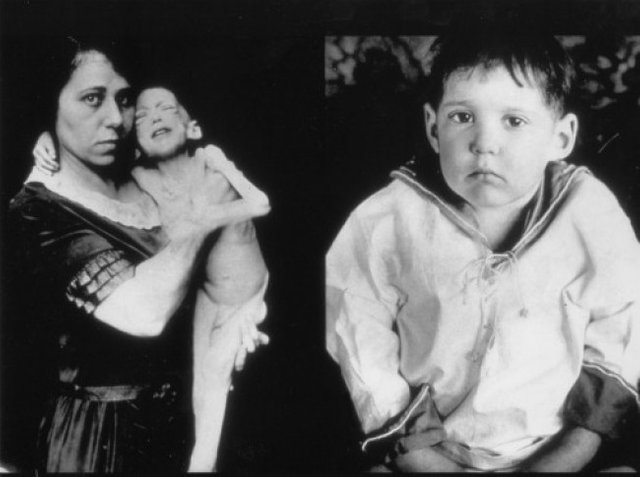Diabetes really is five different diseases and not two as was thought until now

One of the most fascinating things in the history of modern medicine is to see how we are able to turn around firmly established ideas. Today we have one of those examples: diabetes, which has traditionally been divided into type 1 and type 2, could be up to five different types.
The study published by The Lancet Diabetes & Endocrinology is not only a pump at a time when diabetes rates are increasing worldwide, but it can be a fundamental discovery that will revolutionize the way we understand (and treat) the disease.
An old acquaintance that we did not know well at all

Images of the effect of diabetes before the development of injectable insulin
Diabetes is not a new or unknown disease. The first written testimony dates from 1552 before Christ. The medical classification of diabetes has not moved during the last 20 years and is based, mainly, on a basic distinction. While type 1 diabetes is diagnosed in childhood and is caused by lack of insulin.
Type 2 diabetes occurs with the onset of insulin resistance (more insulin is needed to perform the same tasks and the body can not produce it). The truth is that most cases diagnosed with diabetes are type 2 (between 75 and 85%) and, although we have long suspected that it is very variable, we had not made significant efforts to discover what was behind that variability .
The many faces of diabetes

Now a Scandinavian team of researchers has carefully estimated the data of more than 10,000 patients and found an autoimmune type of diabetes and four different subtypes of type 2 diabetes. The surprise was great when they discovered that the types of diabetes were different not only clinically , but also genetically. They were, so to speak, different diseases and not different stages of the same disease.
In addition, they discovered that, hidden behind the idea of the two types of diabetes, patients were not receiving the best possible treatment. This suggests that the traditional classification of diabetes is not able to adapt the treatment to the underlying characteristics of diabetes.
Much remains to be investigated: we do not know in depth the biomarkers, the genotypes or the hemoanalytical profiles. We do not know anything about the pathogenesis of different types, nor how they evolve over time. In addition, the study only involved Scandinavian patients, so the new classification should be confirmed in other populations.
But what is clear, is that diabetes is a very large metabolic disorder that can not fit into simple clinical models. Even more so when we talk about one of the fastest growing diseases in the world and that will mark the future of health systems.
On Wednesday night, I was trying to work on Steemit / watch the football when I had tunnel vision for the first time in my life. It was pretty scary. I was mulling over the possible causes and whether it would be long term or not. I was getting more and more more worried and then thought to have a couple of tangerines.
Within ten minutes or so, I was right as rain! My eyesight fully recovered. I googled the possible causes and symptoms of hypoglaecemia (low blood sugar) and it mentioned diabetes.
Right now, the UK's got a tonne of snow everywhere. But as soon as it clears, I think I need to go visit a doctor to get it checked out. I'm confident that it's just early stages and probably the easiest to manage of all diabetes (when your sugar's low, eat something sweet) so am not panicking too much. That said, I don't want any permanent damage to my vision, so I've got to make sure it doesn't happen too often and for too long. And after the docs, I probably should head to an optician to have my vision checked there. :-/ Better to be safe than sorry.
Thanks for the article. It was an interesting read.